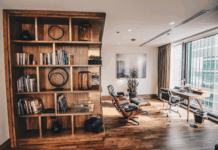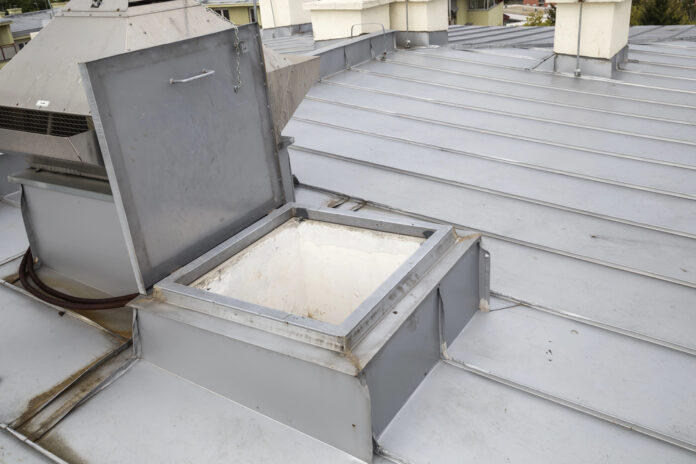Okay, picture this: you walk into a building—maybe it’s your school, a hospital, or even your friend’s apartment. Everything looks clean and organized. The lights work, it’s not too cold, and nothing seems broken. But the reason it all works smoothly isn’t just because someone flips switches or turns knobs. It’s because there are hidden features built into the place that help with all the behind-the-scenes stuff.
One of those hidden features? Access panels. They’re those little square or rectangular doors you barely notice in walls or ceilings. They might not seem exciting, but they play a big role in making sure buildings stay warm, safe, and easy to fix when things go wrong.
What Access Panels Are Actually For
Access panels are small doors that let people reach the parts of a building that are usually tucked away—like wires, pipes, valves, or air systems. These parts aren’t things you want out in the open, but they do need to be checked or fixed sometimes. Without access panels, reaching those parts could mean tearing down parts of a wall. That’s messy, expensive, and super frustrating.
For example, if a plumber needs to reach a pipe that’s leaking behind a wall, an access panel lets them get there fast without damaging anything else. Or if a fire alarm wire needs a quick fix, the technician doesn’t have to dig through the ceiling just to find it.
This is exactly why builders use tools from places like Access Panels Direct to get the right panel for each part of a building. These panels come in all kinds of sizes and materials to match what the job needs—some are fire-rated, some are insulated for warmth, and some are just basic ones for reaching cables and switches.
Helping Buildings Stay Warm
Now let’s talk about heat. Ever wonder how some buildings stay warm in winter without blasting the heater all day? It’s not just about turning up the thermostat. A lot of it comes down to insulation, which keeps heat from escaping too fast.
Access panels might seem small, but if they’re not insulated or sealed properly, they can let cold air in or warm air out. That makes the whole building work harder to stay warm—and costs more money too.
That’s why using the right kind of access panel actually helps keep things cozy. Insulated panels or ones that are “airtight” keep drafts out and warmth in. They’re especially helpful in ceilings, attics, or outer walls where cold air tends to sneak in.
Even loft hatches—those panels in the ceiling that lead to attic spaces—can be designed to hold in heat. If a loft hatch is poorly made or doesn’t close tightly, it can be one of the worst spots for heat loss in a house.
Keeping Things Safe Without Getting in the Way
Safety is another huge part of building design, especially in schools, hospitals, and big office buildings. Wires for alarms, sprinkler systems, or emergency lighting all need to be reachable but also protected.
If someone can’t get to a safety feature during an emergency or inspection, that’s a big problem. But you also don’t want wires hanging out in the open where they could get damaged or mess up how a place looks.
Fire-rated access panels are a smart way to solve this. These are made from special materials that can hold up during a fire for a certain amount of time. That gives people more time to get out safely.
They’re often used in stairwells, hallways, and other spots that help people exit buildings. But they don’t just sit there doing nothing. When someone needs to check or maintain a safety system, they can pop open the panel, do the work, and close it back up. No damage. No mess.
Making Maintenance Less of a Nightmare
Let’s be real—every building needs repairs at some point. It might be something small, like checking an internet cable. Or something bigger, like replacing a broken pipe or testing electrical panels.
The thing is, if it’s hard to reach the spot that needs fixing, repairs take longer and cost more. It also means more disruption, which is a big deal in places where people work or live.
This is where good access planning makes a huge difference. Builders think ahead by placing access panels in smart spots. They look at the design and figure out where someone might need to reach later on—like behind bathrooms, in basements, or above drop ceilings.
Instead of cutting a hole every time something needs fixing, there’s already a neat, secure way to get in and out. It’s faster, cleaner, and less stressful for everyone involved.
They’re Not Just for Big Buildings
You might think all this sounds great for skyscrapers or hospitals—but what about regular houses? Turns out, access panels are helpful there too.
A home might have plumbing behind walls, an HVAC system in the attic, or electrical boxes that need checking. Instead of making everything permanent and hard to reach, panels make it easy to take care of little problems before they become big ones.
Some homeowners even use them for hiding cables from mounted TVs or speakers. Others need them to reach shut-off valves, which can help stop a flood in an emergency.
There are even “riser doors” for vertical shafts that hold all kinds of hidden services. These can go from the basement up to the top floor. They’re covered by clean-looking doors that blend in with the rest of the wall, but they can be opened any time someone needs to work on what’s behind them.
Small Doors, Big Impact
So yeah, they might look boring or even go unnoticed most of the time, but access panels do way more than people think. They help keep warmth inside, protect safety systems, and make it way easier to fix problems without destroying walls or ceilings.
Buildings that have the right panels in the right places don’t just look finished—they actually work better.
In Short:
- Access panels are small, hidden doors that make a big difference.
- They help with heating by sealing off drafts and keeping insulation strong.
- They protect safety equipment so it’s easy to reach without being in the way.
- They make repairs faster, cheaper, and way less messy.
- And they’re not just for huge buildings—homes can use them too.
Next time you see one of those little panels in a wall or ceiling, just know there’s probably something important behind it—and that little door is what keeps everything running smoothly.
Want to keep the conversation going? Think about how your own home or school is built. Ever notice one of those secret-looking doors? Now you know why it’s there.
Find a Home-Based Business to Start-Up >>> Hundreds of Business Listings.














































